
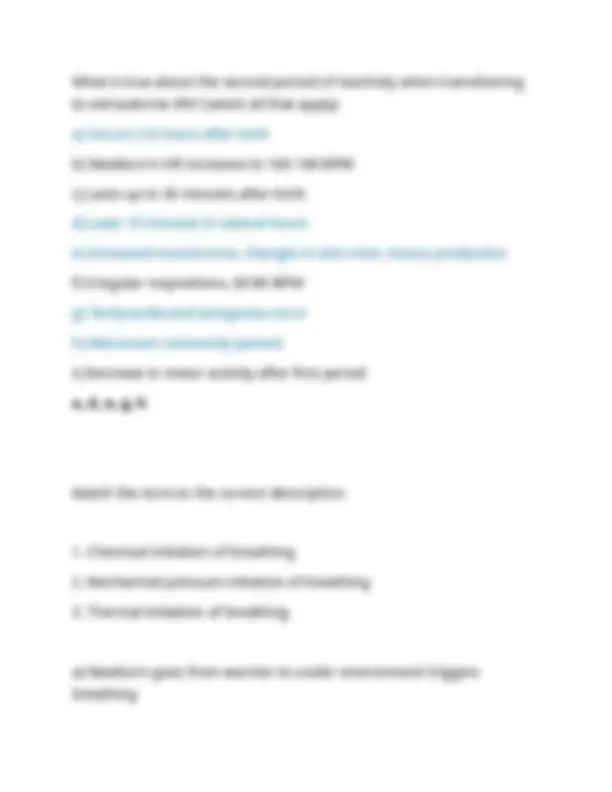
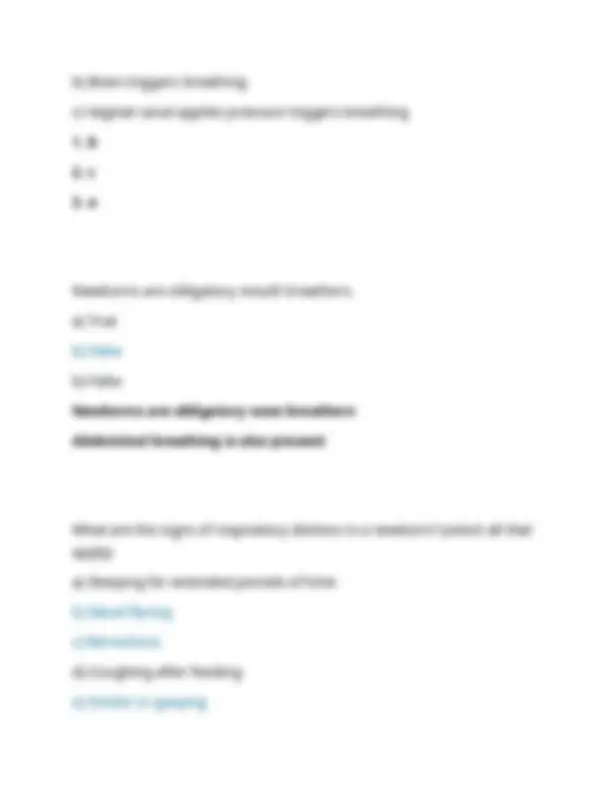
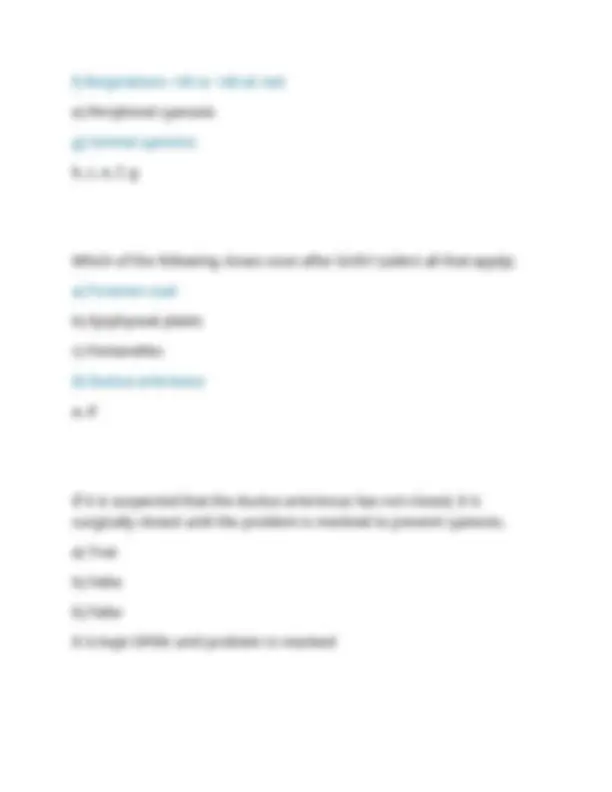
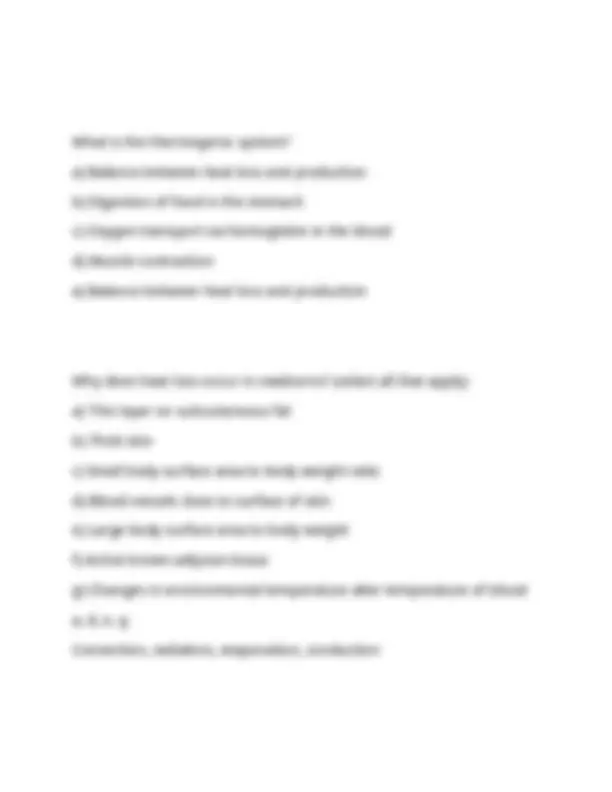
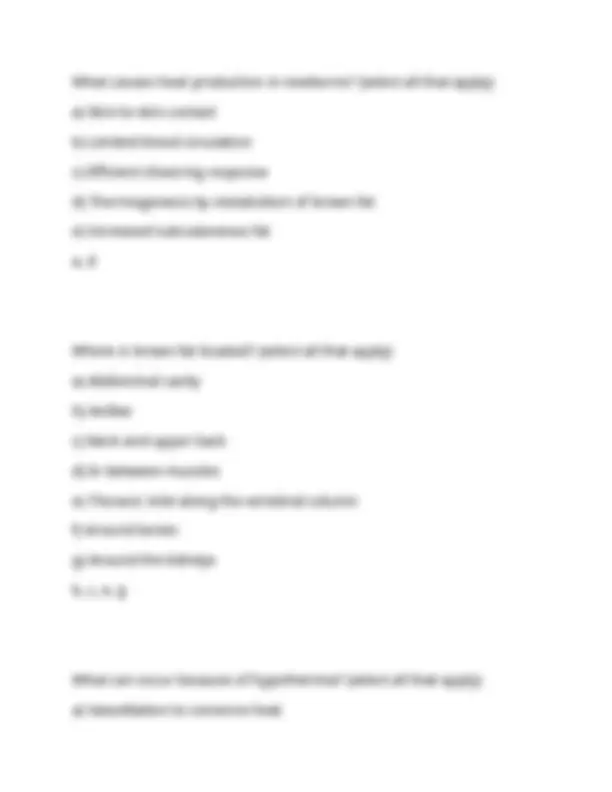
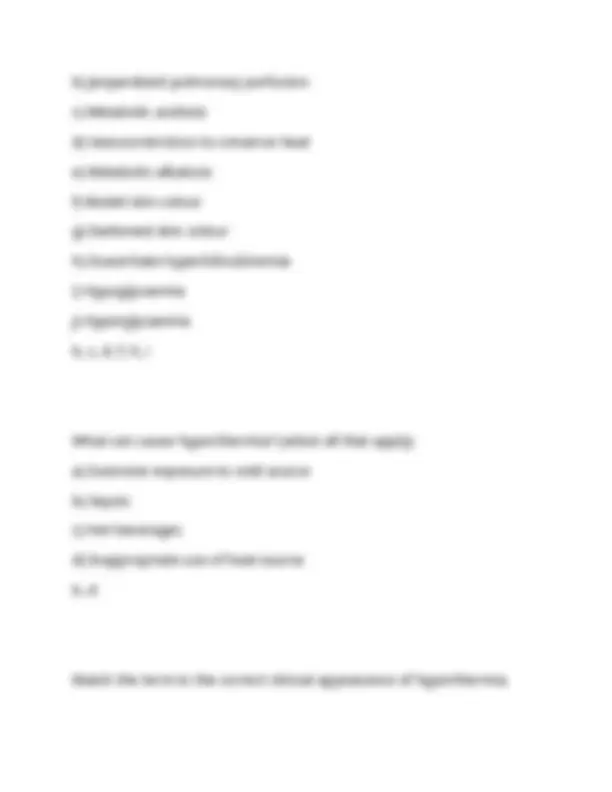
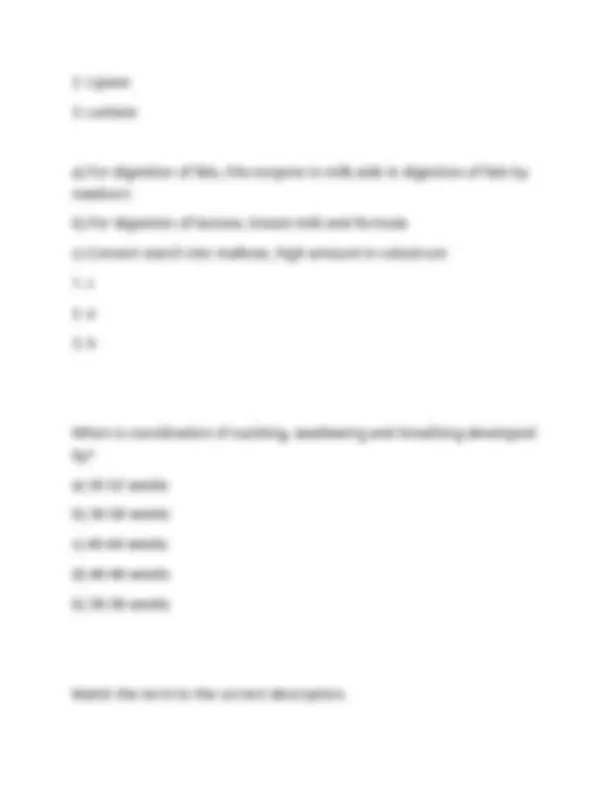
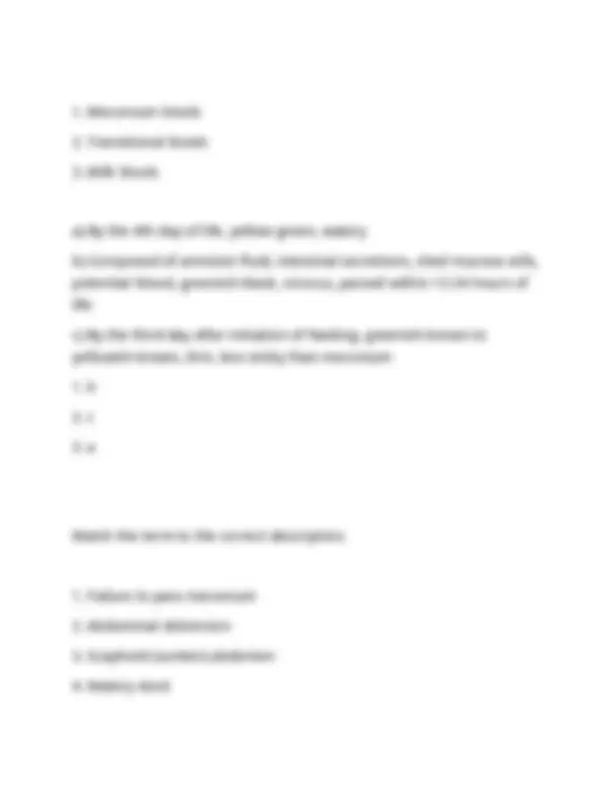
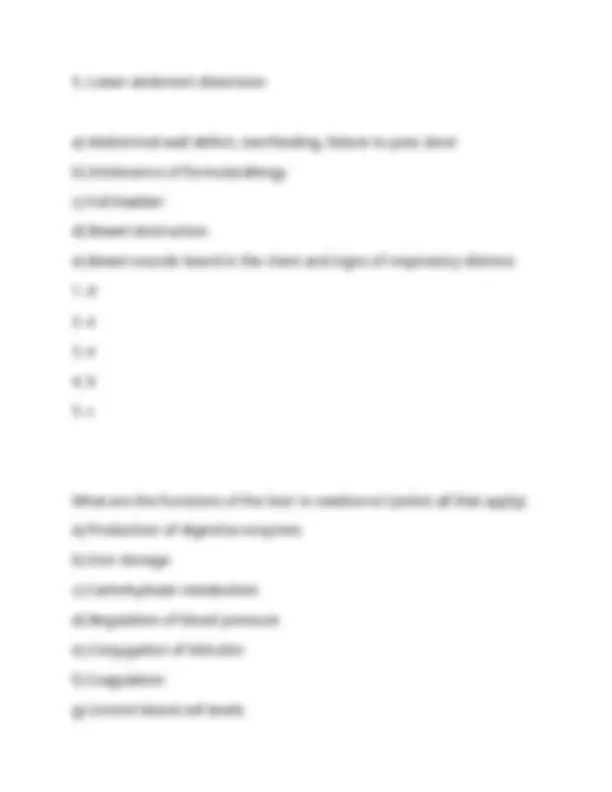
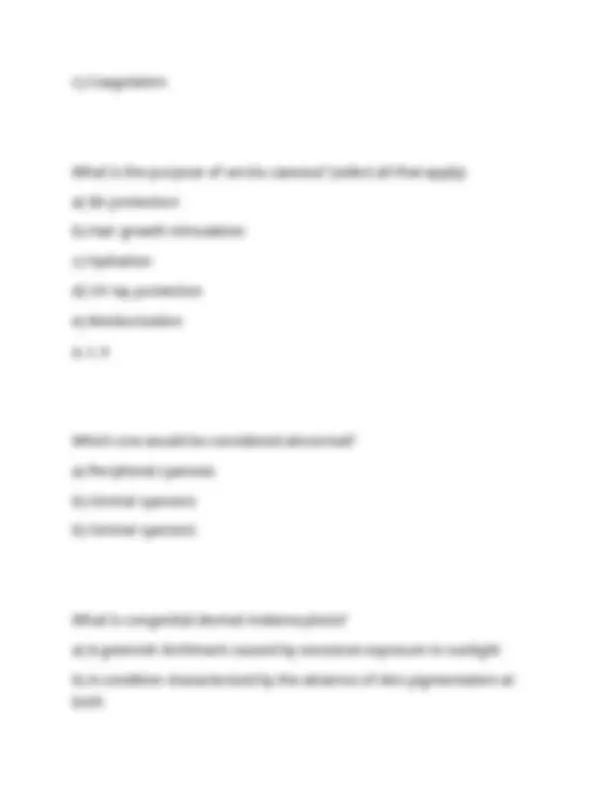
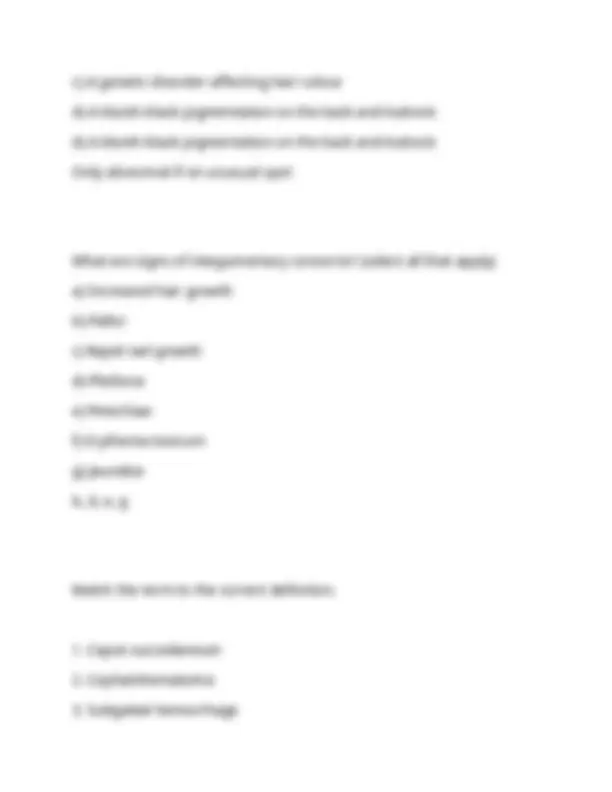
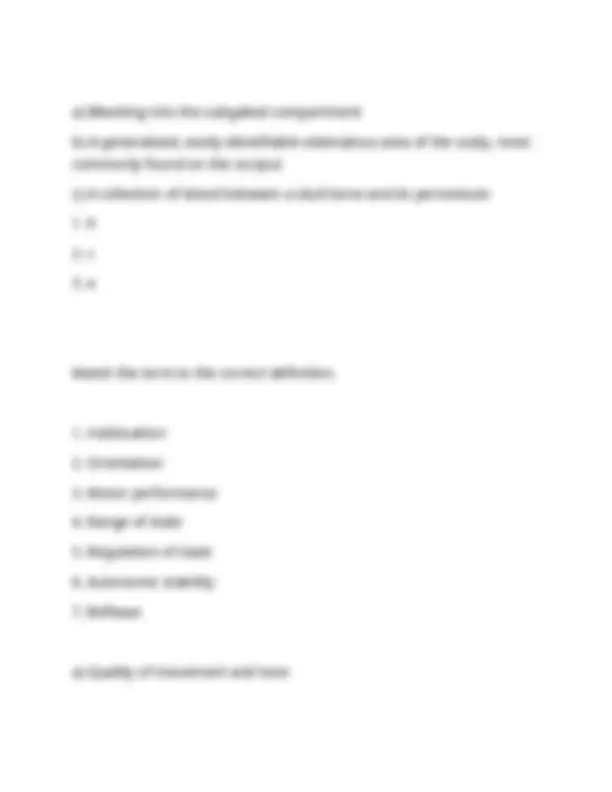
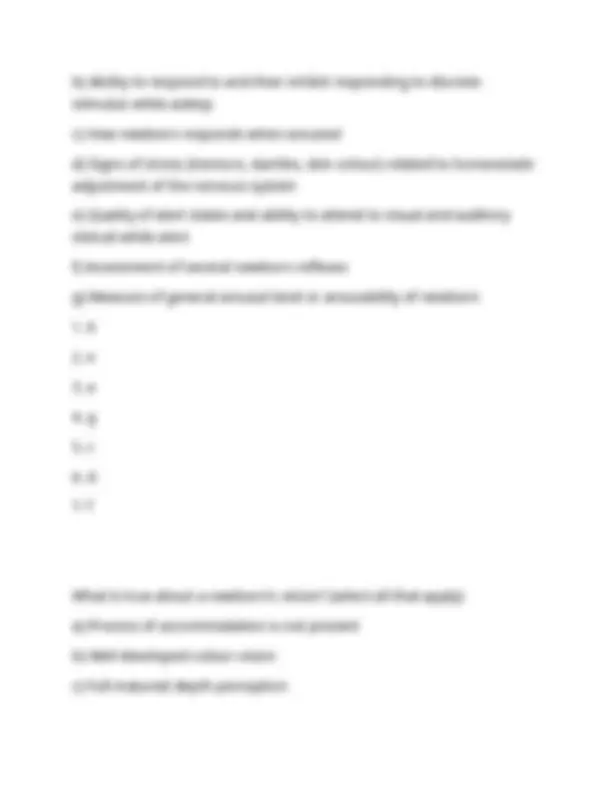
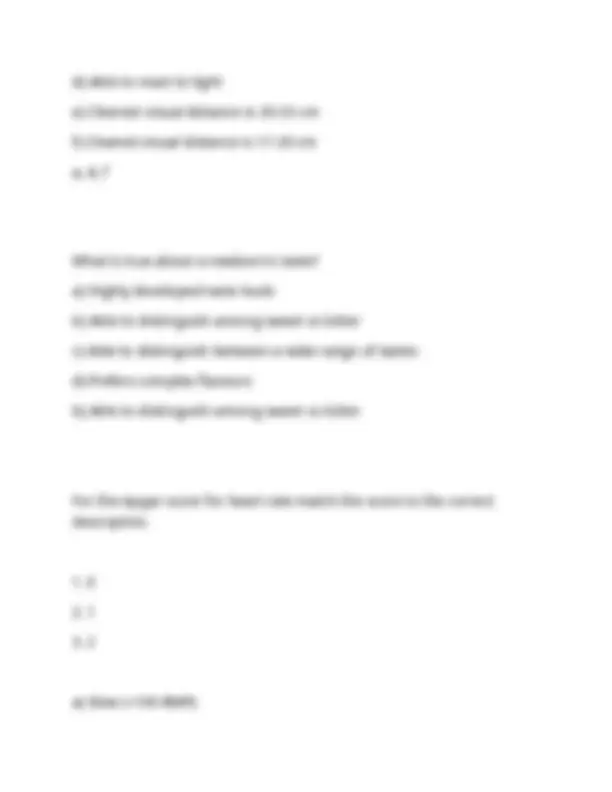
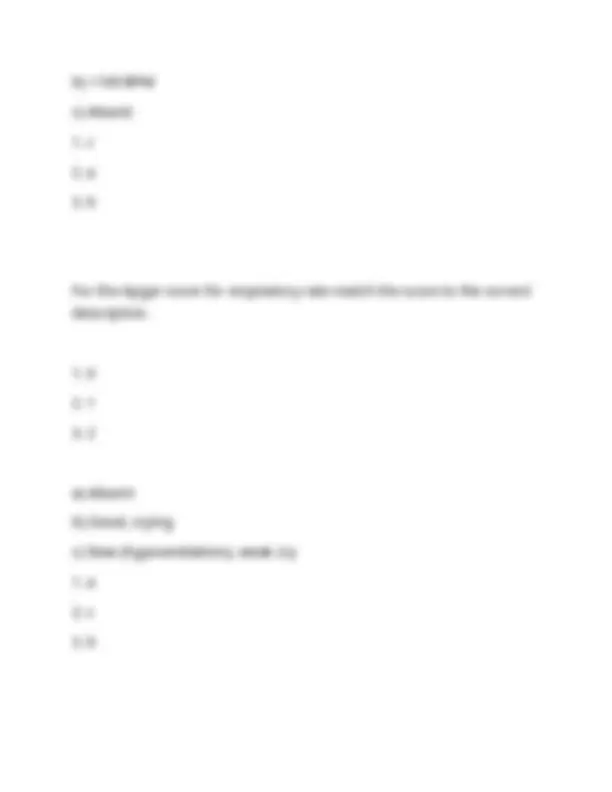
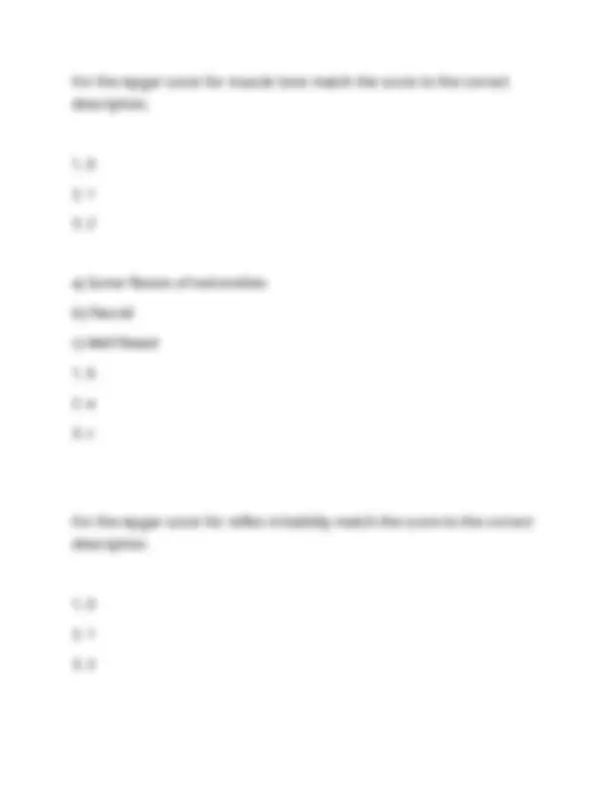
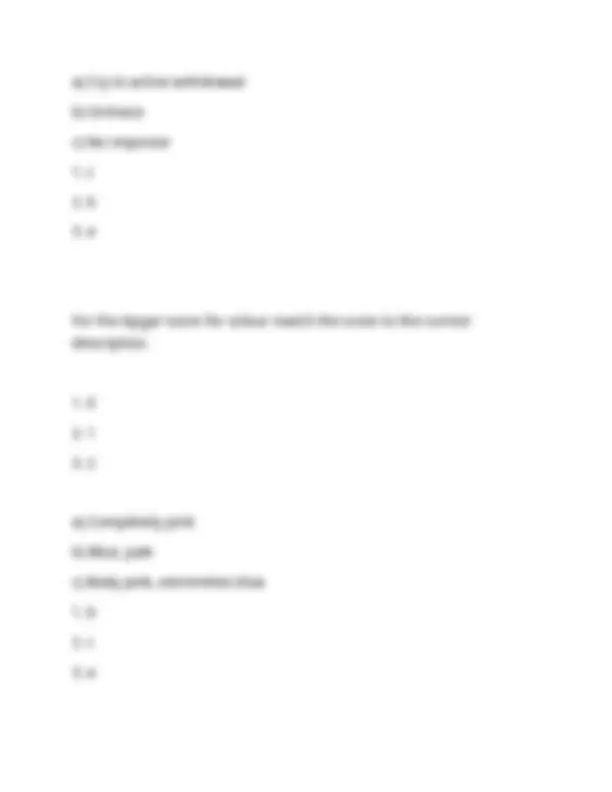
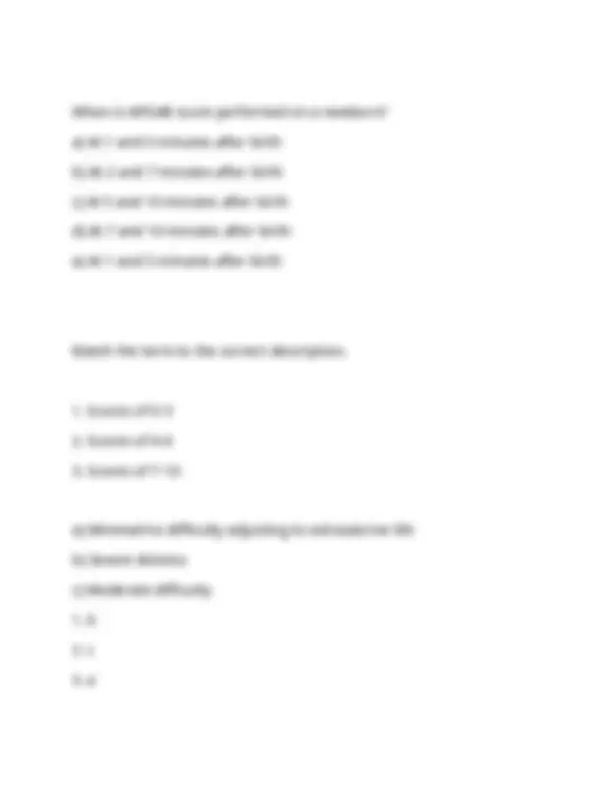
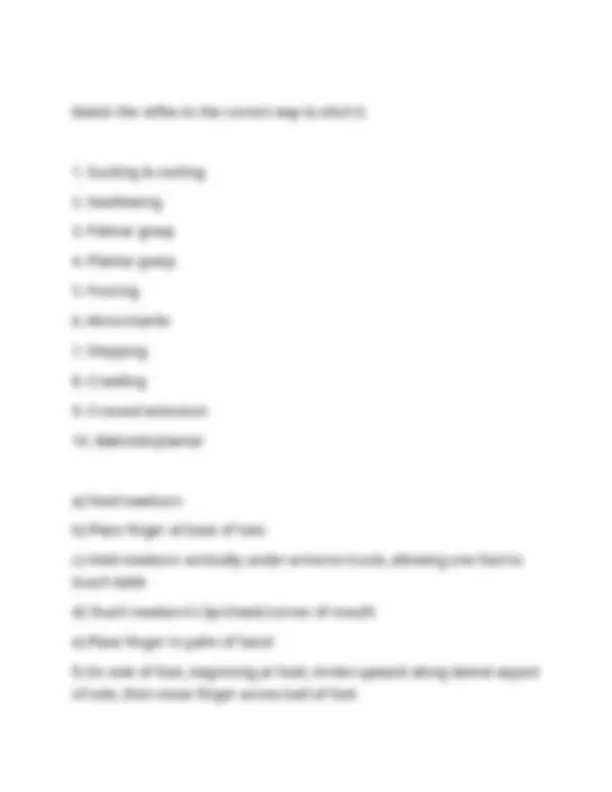
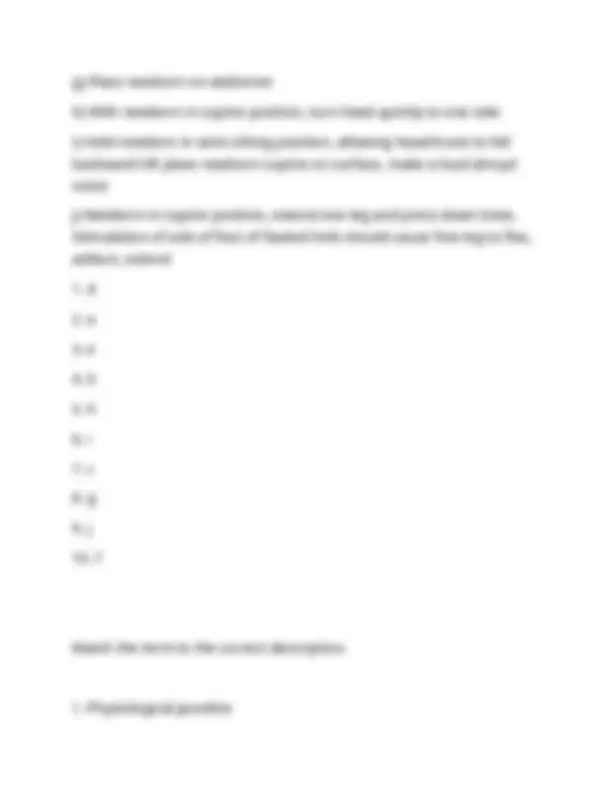
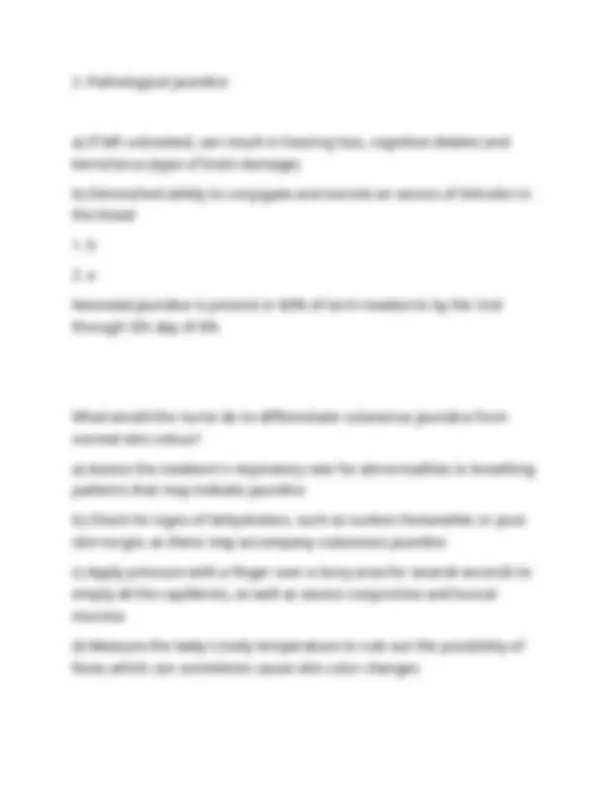
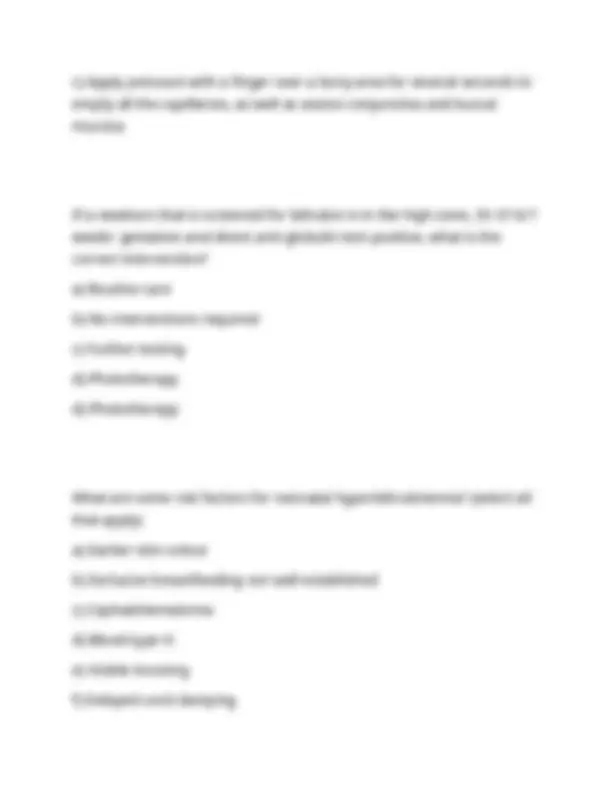
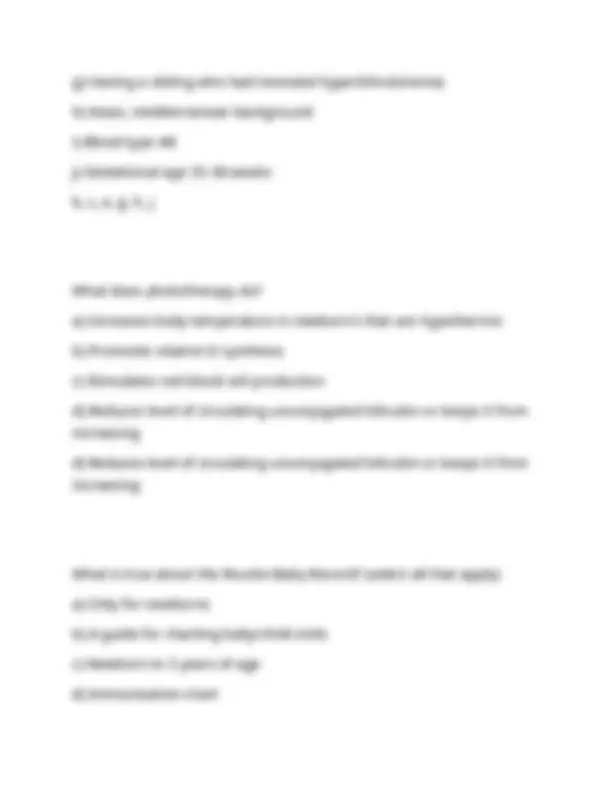
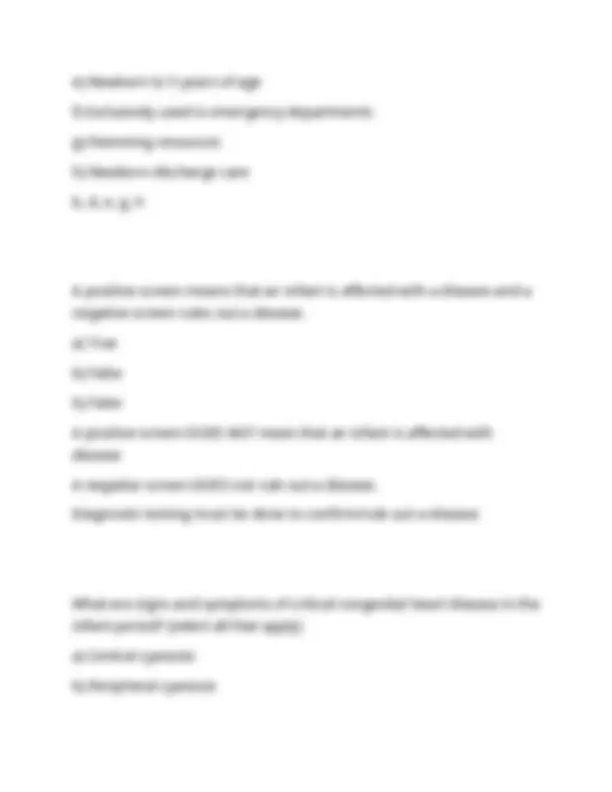
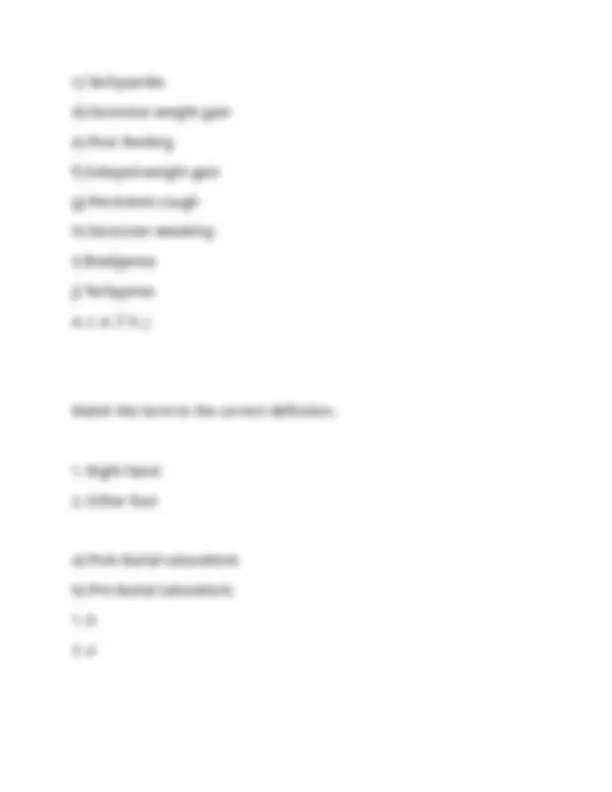
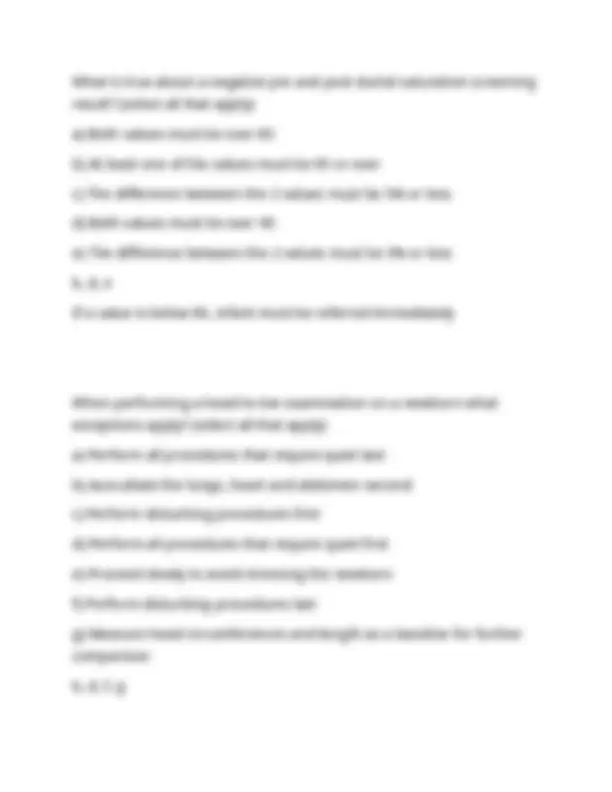
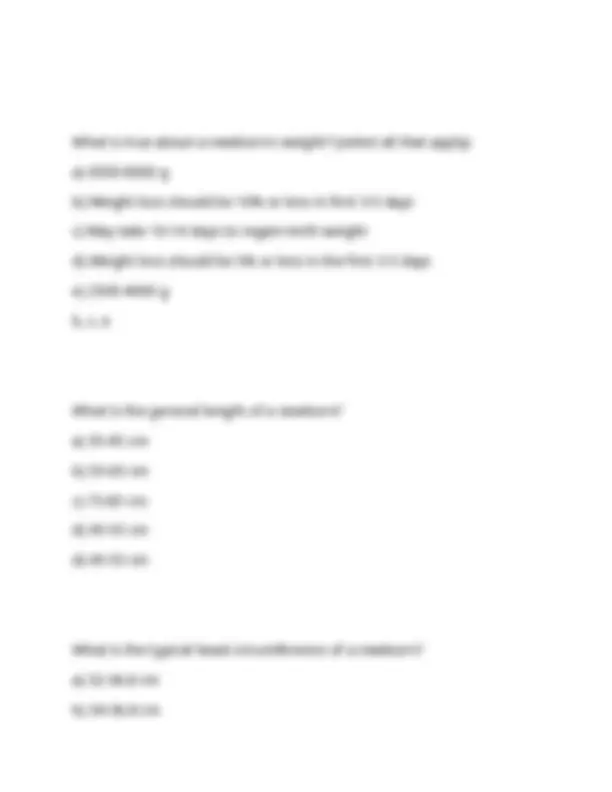
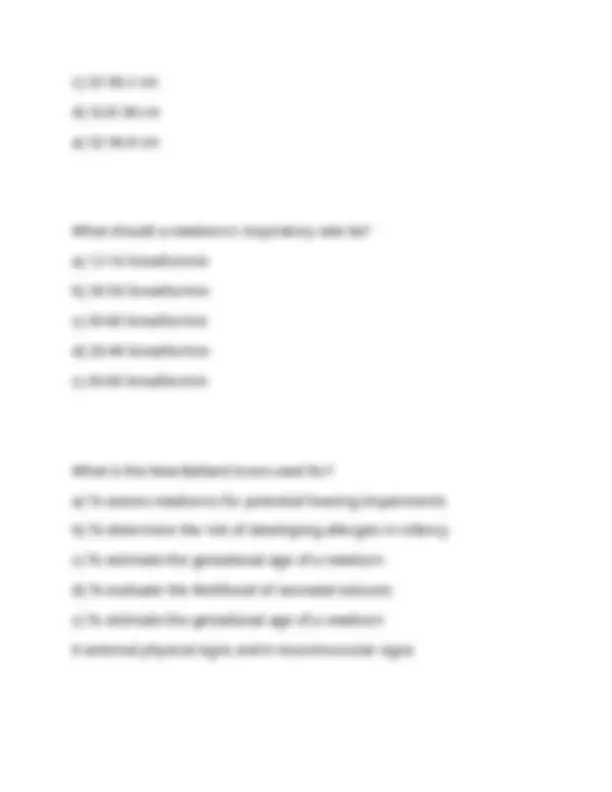
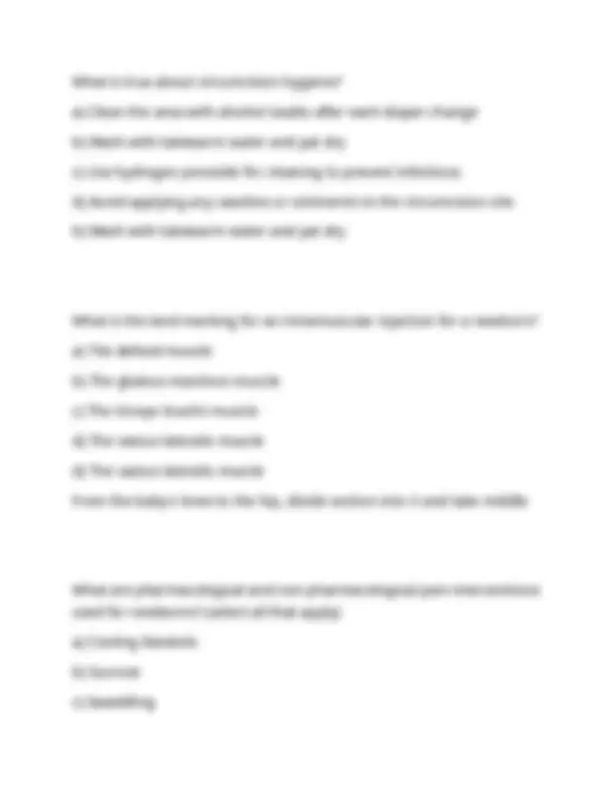
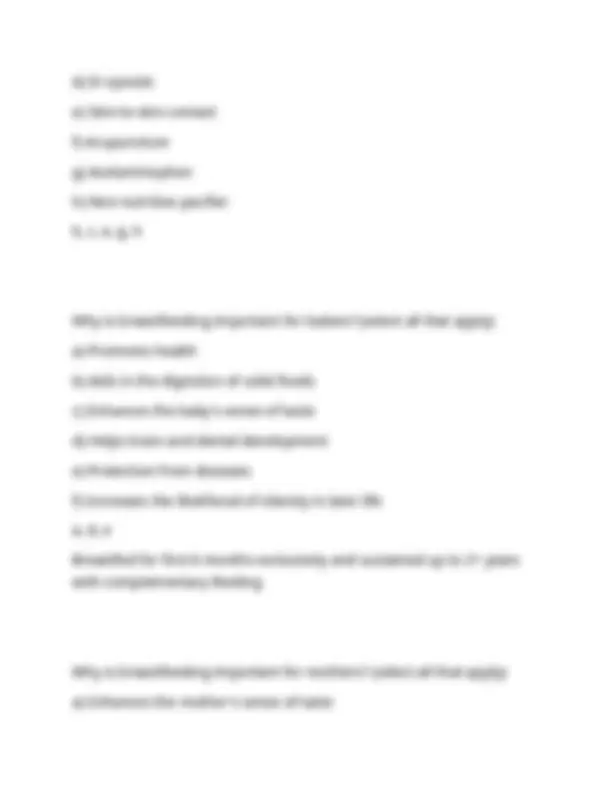
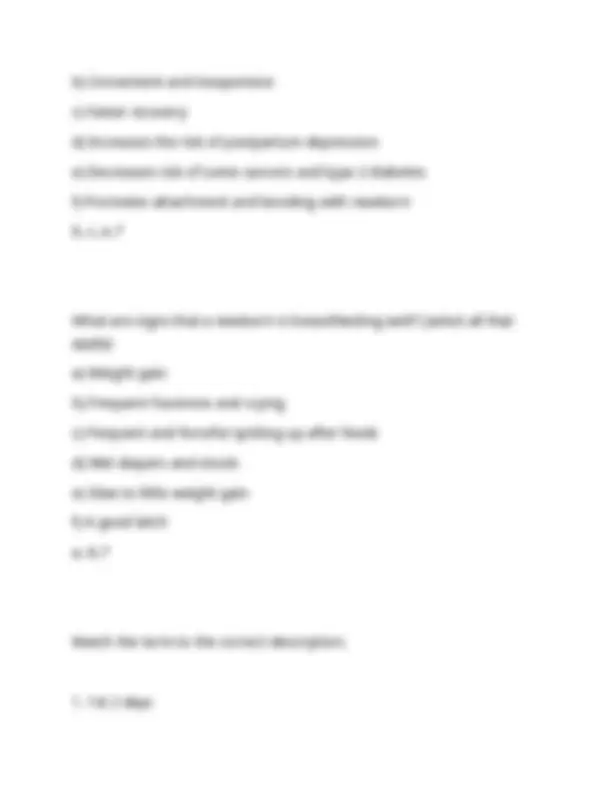
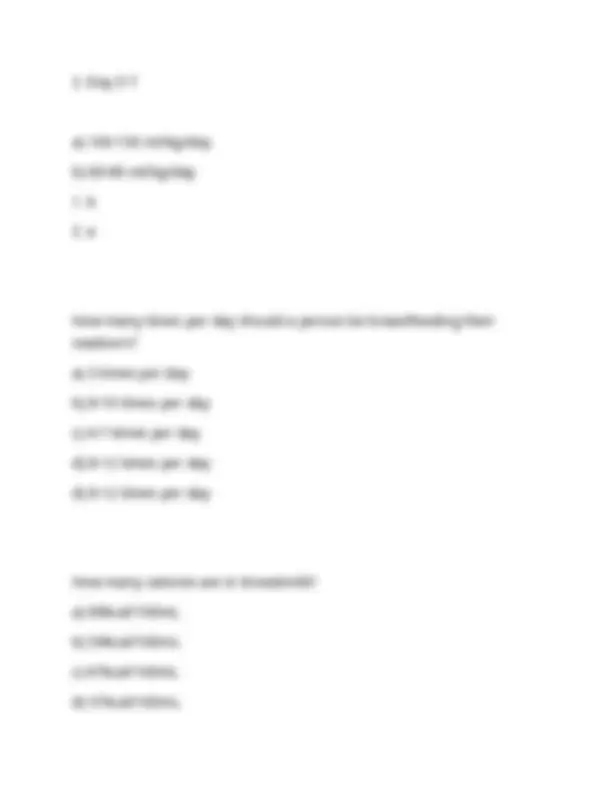



Study with the several resources on Docsity

Earn points by helping other students or get them with a premium plan


Prepare for your exams
Study with the several resources on Docsity

Earn points to download
Earn points by helping other students or get them with a premium plan
Community
Ask the community for help and clear up your study doubts
Discover the best universities in your country according to Docsity users
Free resources
Download our free guides on studying techniques, anxiety management strategies, and thesis advice from Docsity tutors
NURS 2546 WEEK 7 - THE NEWBORN 2025-2026|QUESTIONS AND ANSWERS |A+ RATED
Typology: Exams
1 / 41

This page cannot be seen from the preview
Don't miss anything!


































Which of the following are physiological adjustments of a newborn? (select all that apply) a) Establishing/maintaining respirations b) Elevating body temperature c) Adjusting to circulatory changes d) Regulating body temperature e) Increasing heart rate f) Ingesting/retaining/absorbing nutrients g) Eliminating nutrients h) Regulating weight i) Eliminating waste a, c, d, f, h, i Which of the following are behavioural adjustments of a newborn? (select all that apply) a) Following objects with their eyes b) Regulated behavioral tempo independent of mother c) Processing/storing/organizing multiple stimuli
d) Walking independently e) Sleeping through the night from the first day f) Establishing relationships with caregivers/environment g) Establishing complex relationships such as friends b, c, f What is true about the first period of reactivity when transitioning to extrauterine life? (select all that apply) a) Occurs 2-8 hours after birth b) Newborn's HR increases to 160-180 BPM c) Lasts up to 30 minutes after birth d) Lasts 10 minutes to several hours e) Increased muscle tone, changes in skin colour, mucus production f) Irregular respirations, 60-80 BPM g) Tachycardia and tachypnea occur h) Meconium commonly passed i) Decrease in motor activity after first period b, c, f, i
b) Brain triggers breathing c) Vaginal canal applies pressure triggers breathing
**1. b
f) Respirations <30 or >60 at rest e) Peripheral cyanosis g) Central cyanosis b, c, e, f, g Which of the following closes soon after birth? (select all that apply) a) Foramen oval b) Epiphyseal plates c) Fontanelles d) Ductus arteriosus a, d If it is suspected that the ductus arteriosus has not closed, it is surgically closed until the problem is resolved to prevent cyanosis. a) True b) False b) False It is kept OPEN until problem is resolved
e) Profuse sweating during feeds f) Abnormal pulses g) Rapid breathing h) Too low/high BP i) Abnormal colour c, d, f, h, i Blood pressure is not routinely measured in newborns. a) True b) False a) True What is true about leukocytes in newborns? a) Fast to recognize foreign protein and fight infection b) Higher amount than adults for majority of infancy c) Slow to recognize foreign protein and fight infection d) Low during the 1st day after birth then increases rapidly to stable level c) Slow to recognize foreign protein and fight infection Baby may present with signs of sepsis but not a high WBC count
What is the thermogenic system? a) Balance between heat loss and production b) Digestion of food in the stomach c) Oxygen transport via hemoglobin in the blood d) Muscle contraction a) Balance between heat loss and production Why does heat loss occur in newborns? (select all that apply) a) Thin layer on subcutaneous fat b) Thick skin c) Small body surface area to body weight ratio d) Blood vessels close to surface of skin e) Large body surface area to body weight f) Active brown adipose tissue g) Changes in environmental temperature alter temperature of blood a, d, e, g Convection, radiation, evaporation, conduction
b) Jeopardized pulmonary perfusion c) Metabolic acidosis d) Vasoconstriction to conserve heat e) Metabolic alkalosis f) Model skin colour g) Darkened skin colour h) Exacerbate hyperbilirubinemia i) Hypoglycaemia j) Hyperglycaemia b, c, d, f, h, i What can cause hyperthermia? (select all that apply) a) Excessive exposure to cold source b) Sepsis c) Hot beverages d) Inappropriate use of heat source b, d Match the term to the correct clinical appearance of hyperthermia.
b, c, e, f Supplemental iron is needed for breast-fed babies. a) True b) False b) False Needed for FORMULA FED babies What blood glucose levels require interventions? a) 2.5 mmol/L b) 2.3 mmol/L c) 3.2 mmol/L d) 2.2 mmol/L d) 2.2 mmol/L What are signs of hypoglycemia in newborns? (select all that apply) a) Jitteriness b) Elevated BP c) Lethargy
d) Apnea e) Tachycardia f) Feeding difficulties g) High body temperature h) Seizures a, c, d, f, h All babies have jaundice due to a decreased production of bilirubin and altered hepatic clearance of bilirubin. a) True b) False b) False All babies have jaundice due to an INCREASED production of bilirubin and altered hepatic clearance of bilirubin Why is a vitamin K injection given to newborns shortly after birth? a) Iron deficiency b) Immune system c) Coagulation d) Bone development
c) A genetic disorder affecting hair colour d) A bluish-black pigmentation on the back and buttock d) A bluish-black pigmentation on the back and buttock Only abnormal if on unusual spot What are signs of integumentary concerns? (select all that apply) a) Increased hair growth b) Pallor c) Rapid nail growth d) Plethora e) Petechiae f) Erythema toxicum g) Jaundice b, d, e, g Match the term to the correct definition.
a) Bleeding into the subgaleal compartment b) A generalized, easily identifiable edematous area of the scalp, most commonly found on the occiput c) A collection of blood between a skull bone and its periosteum